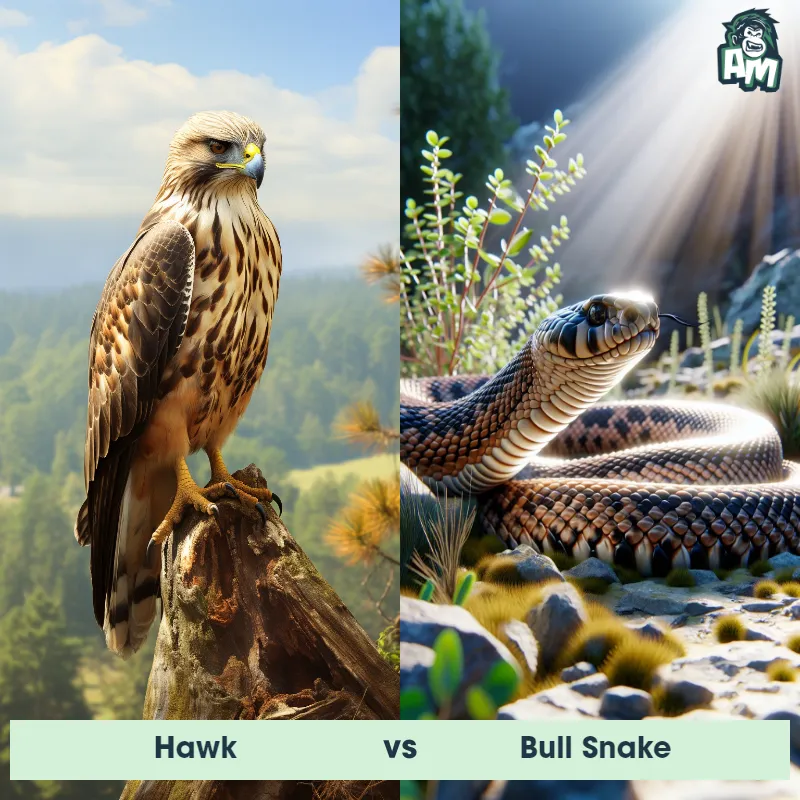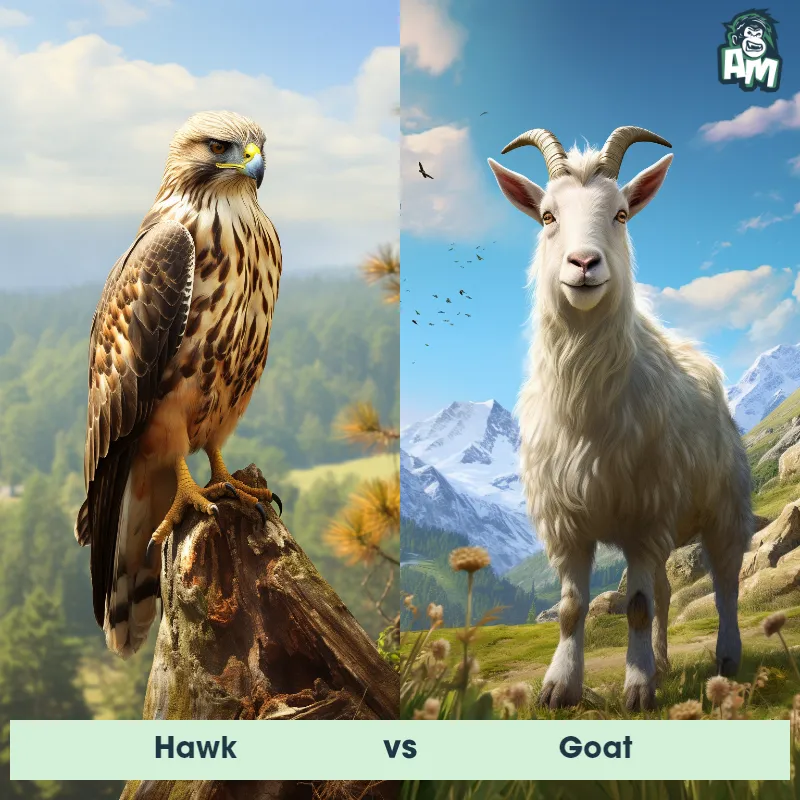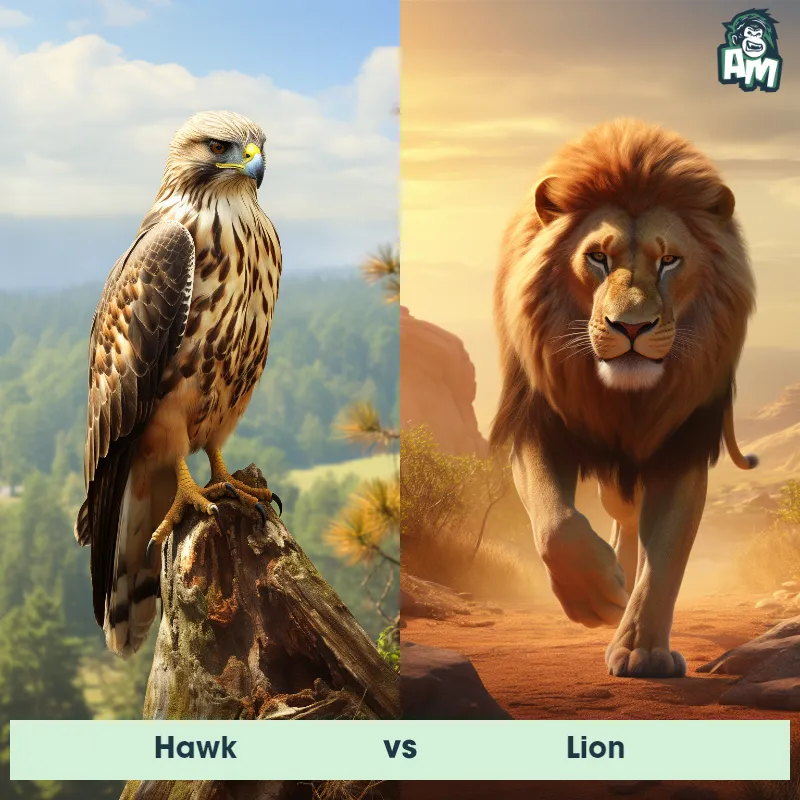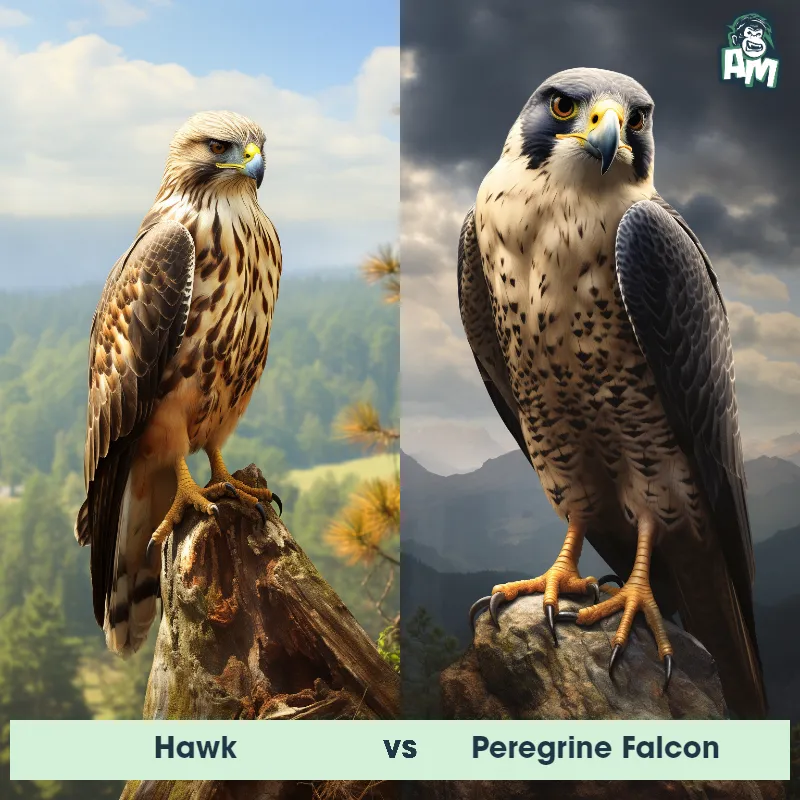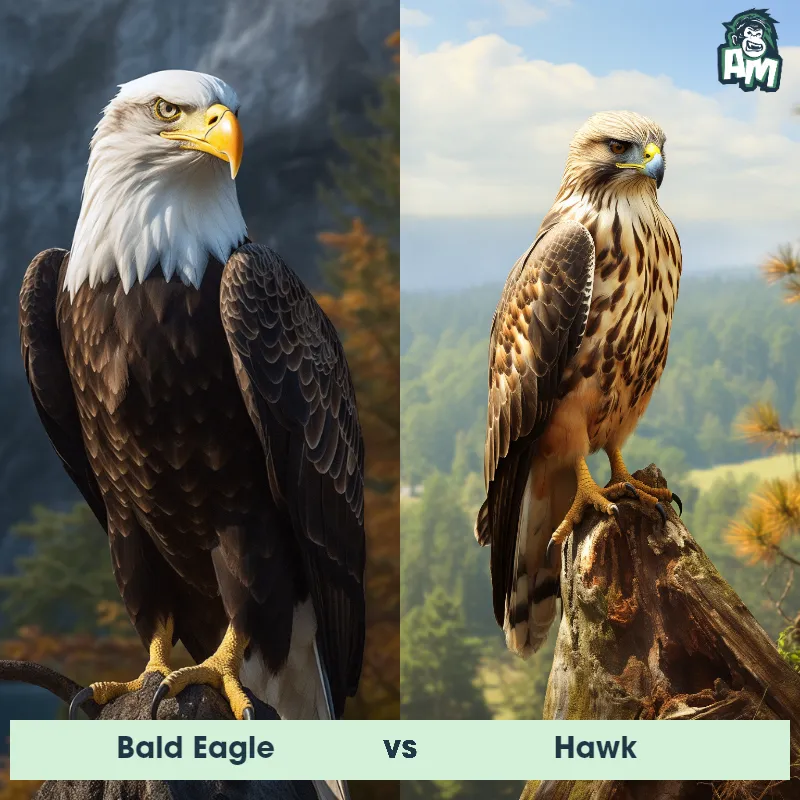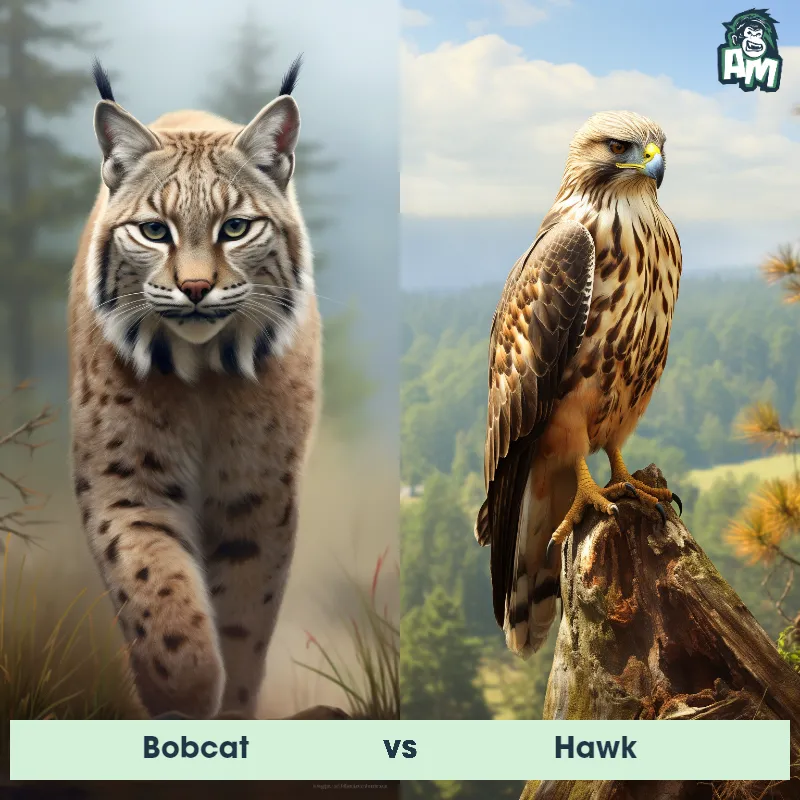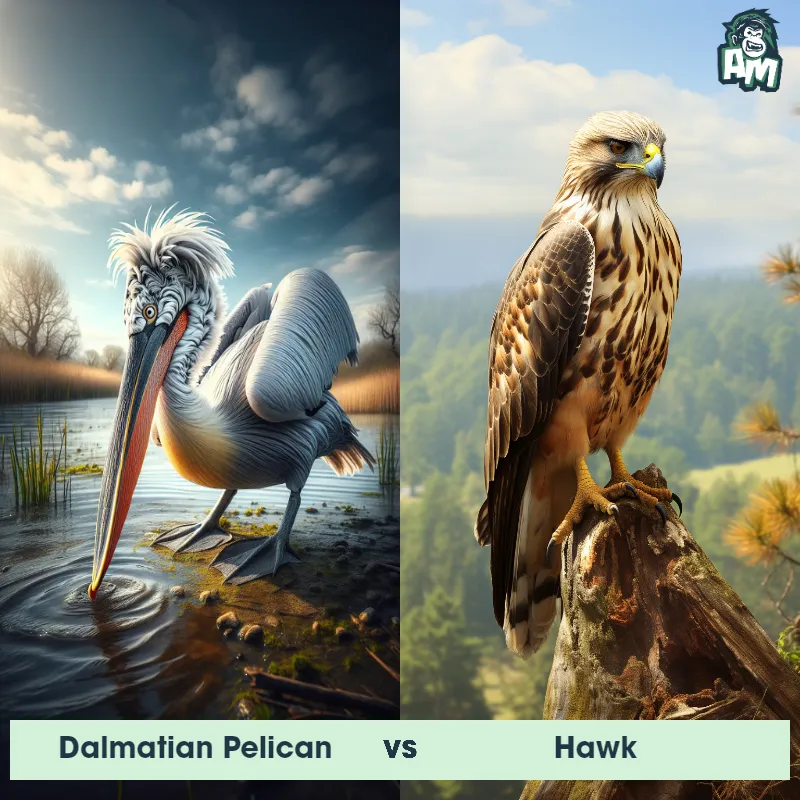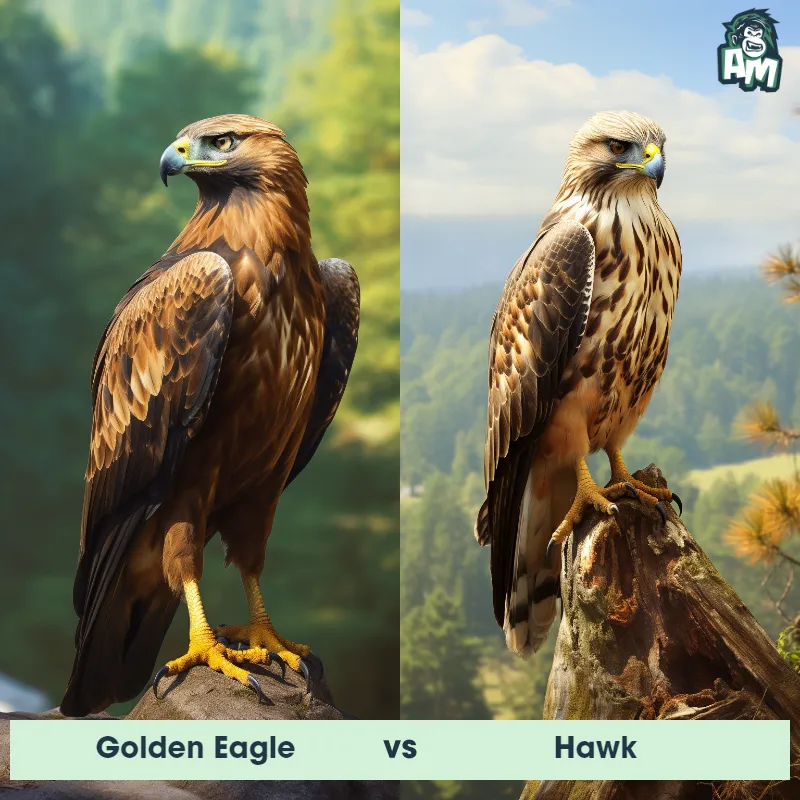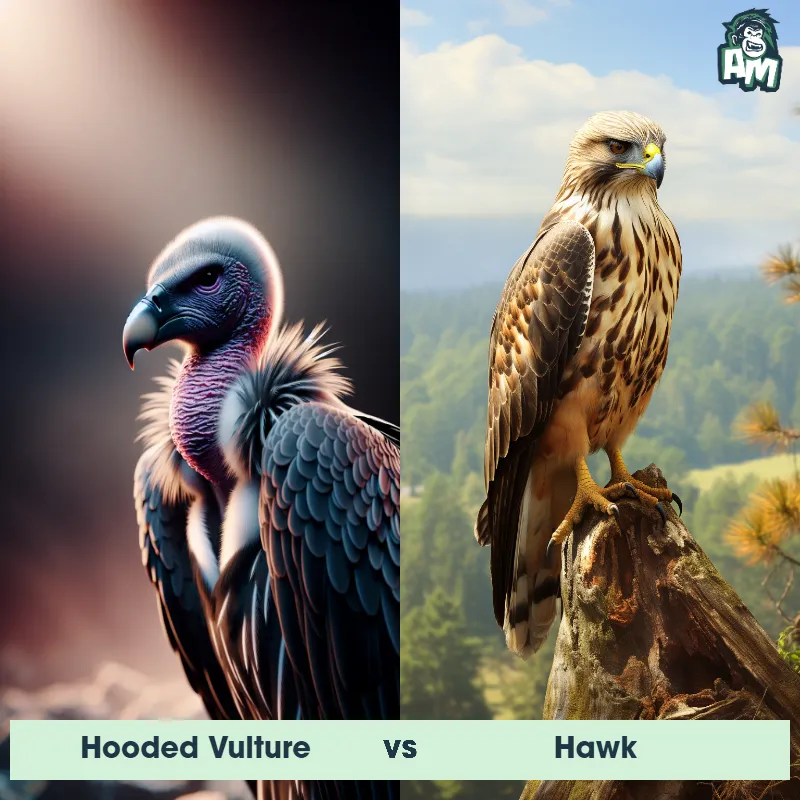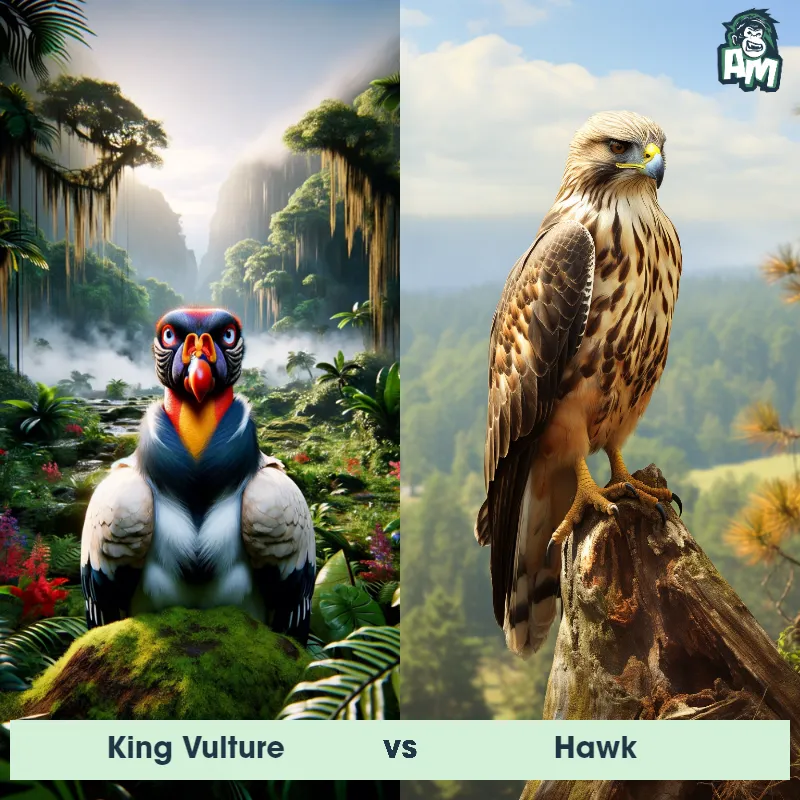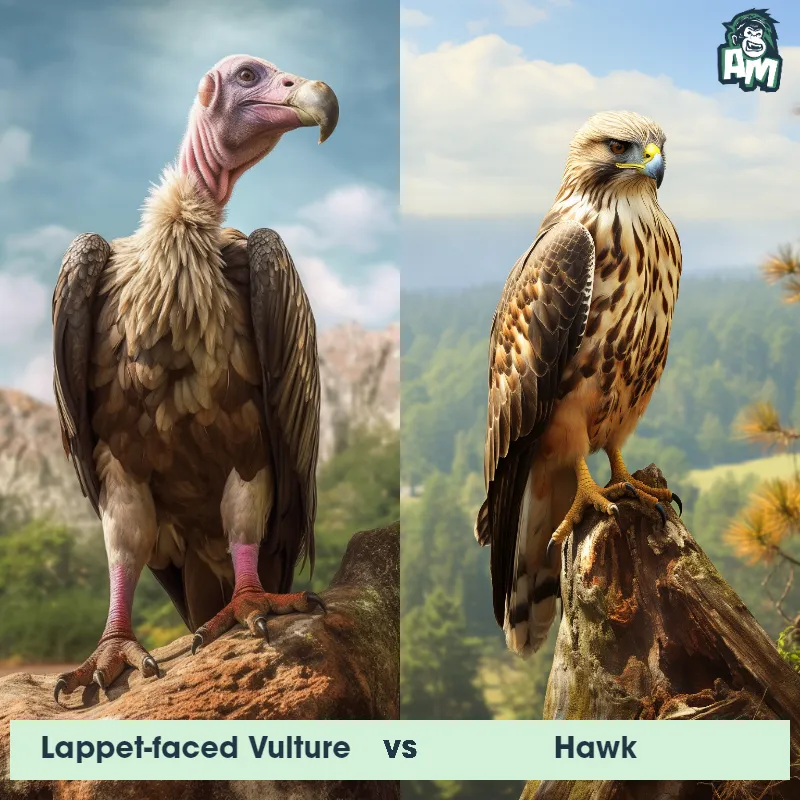The Hawk
The hawk is a majestic bird of prey known for its sharp vision, strong beak, and powerful talons. They have a compact and streamlined body, large wingspan, and curved beak, which enable them to fly swiftly and capture their prey with great precision. Hawks are known for their exceptional hunting skills and keen senses, making them successful predators in various habitats around the world.

| Hawk | |
|---|---|
| Size | Up to 22 inches (56 cm) in length, wingspan up to 55 inches (140 cm) |
| Weight | Up to 4.5 lbs (2 kg) |
| Speed | 150mph (241km/h) |
| Key Strength | Sharp vision, hooked beak, and powerful talons |
| Biggest Weakness | Limited ground mobility |
| Scientific Name | Accipitridae |
| Family | Accipitriformes |
| Habitat | Forests, deserts, grasslands, fields, mountains, and coastal regions |
| Geography | Worldwide except in polar regions |
| Diet | Small mammals, birds, and reptiles |
| Lifespan | 10 years - 30 years |

The Hawk
The hawk is a majestic bird of prey known for its sharp vision, strong beak, and powerful talons. They have a compact and streamlined body, large wingspan, and curved beak, which enable them to fly swiftly and capture their prey with great precision. Hawks are known for their exceptional hunting skills and keen senses, making them successful predators in various habitats around the world.
Fun Fact: Hawks have the ability to spot prey from a great distance, thanks to their excellent eyesight which is about 8 times more powerful than that of humans.
| Hawk | |
|---|---|
| Size | Up to 22 inches (56 cm) in length, wingspan up to 55 inches (140 cm) |
| Weight | Up to 4.5 lbs (2 kg) |
| Speed | 150mph (241km/h) |
| Key Strength | Sharp vision, hooked beak, and powerful talons |
| Biggest Weakness | Limited ground mobility |
| Scientific Name | Accipitridae |
| Family | Accipitriformes |
| Habitat | Forests, deserts, grasslands, fields, mountains, and coastal regions |
| Geography | Worldwide except in polar regions |
| Diet | Small mammals, birds, and reptiles |
| Lifespan | 10 years - 30 years |
Hawk Matchups
We use AI to simulate matchups between the Hawk and other animals. Our simulation considers size, strength, and natural predatory behaviors to determine the most likely outcome.
Hawk: Diet, Predators, Aggression, and Defensive Behaviors
What do Hawks eat?
Hawks are carnivorous birds of prey, primarily feeding on small mammals such as mice, squirrels, rabbits, and even other birds. They are skilled hunters, using their sharp talons to catch and kill their prey.
Do Hawks have any predators?
Hawks are apex predators and do not have many natural predators. However, larger birds of prey such as eagles or owls may occasionally prey on smaller hawks. Additionally, some animals like raccoons or snakes may raid hawk nests and steal eggs or young chicks.
Are Hawks aggressive?
Hawks are known to be quite aggressive when it comes to defending their territory or nest. They will vigorously defend their young from potential threats and can be hostile towards other birds or animals that encroach on their territory.
Do Hawks fight?
Hawks may engage in physical confrontations with other birds of prey, especially when defending their territory or competing for food sources. These fights usually involve aerial displays of strength and agility, with the goal of asserting dominance.
How do Hawks defend themselves?
Hawks have several defensive strategies to protect themselves from threats. They rely on their keen eyesight and agility to evade danger, as well as their sharp talons and beak to fight off attackers. In some cases, they may also emit loud screeching calls to intimidate potential threats.
What is the biggest weakness of Hawks in a fight?
One potential weakness of hawks in a fight is their vulnerability to larger birds of prey like eagles or owls. While hawks are skilled hunters and fighters, they may struggle to defend themselves against significantly larger predators that can overpower them with sheer size and strength.
Fun Fact: Hawks are highly adaptable birds, and they can be found in a wide range of habitats including forests, grasslands, deserts, and even urban areas.
Fun Fact: Some species of hawks are known for their remarkable hunting strategy called "kiting," where they hover in mid-air while scanning the ground for potential prey, before swiftly diving down to catch their target.



